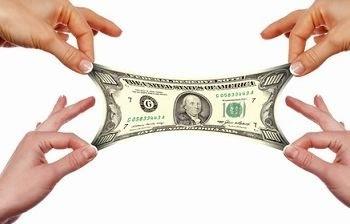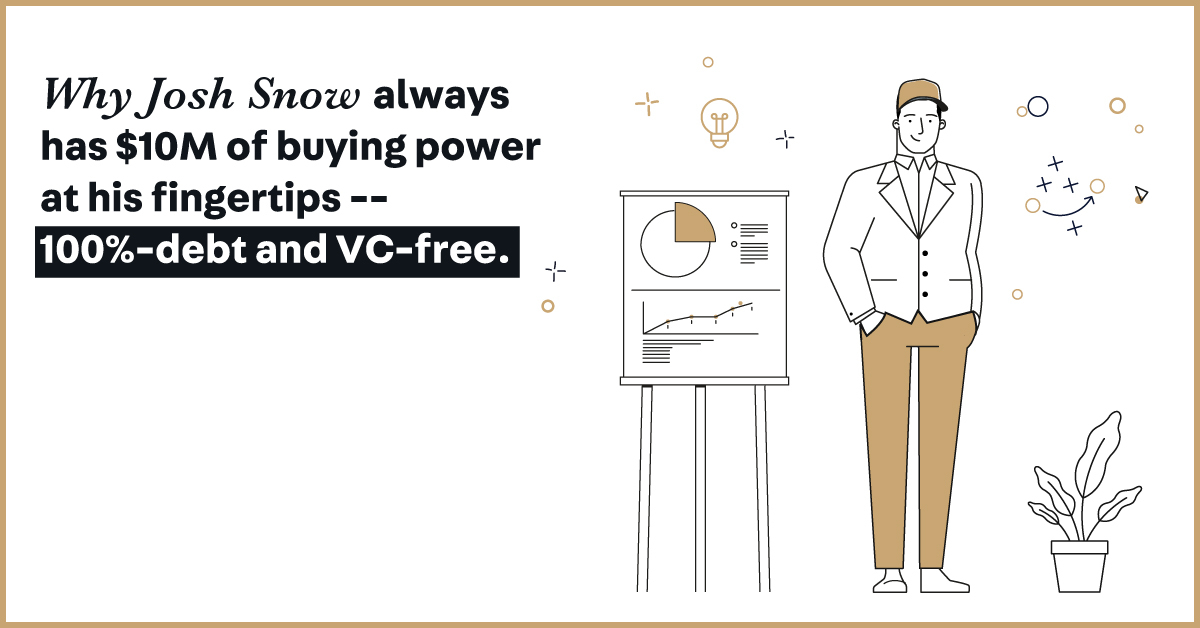Most online entrepreneurs think that If you want to build an 8-figure e-commerce company, the most important thing you need to do is find a hot product, ad spend hell out of it, generate some decent ROI, and you’re golden
The truth is, it’s WAY more complicated than that.
Making real money online has less to do with lucking into the next product fad and ad spend and more to do with discipline and following some little known financial principles that have propelled Josh “Snow” Elizetxe and Snow Teeth Whitening -- the #1 oral care brand on the planet -- into the financial stratosphere.
He recently joined me and Dylan Carpenter on the season premiere of our new Rich Ad, Poor Ad podcast and did a full open kimono on the savvy financial moves he’s made over the years that have allowed him to completely self fund his 8-figure company and access massive amounts of cash in an instant to take advantage of any opportunity that might come up.
You’ll definitely want to give the whole episode a listen, but here are a few of the key financial takeaways that came out of the show about how he manages cash flow, and at the same time, invest so much into R&D. So here’s a peek at some of the tactics, tools, strategies on how he financed the growth so quickly.1. Pay yourself... last.
Like I said, right now Snow Teeth Whitening is carrying zero debt. They haven’t raised any outside capital. How is that possible? This is what Josh says is part of his secret.
“I think the first thing is that I pay myself $60,000 a year. That's what I paid myself for a long time, right. And that's the only money that I was taking out of the business. And so that meant I had about 40,000 a year to live on. But luckily, I've been doing this for so long, I've been fortunate to build and sell a few companies that I essentially decided to live off of my savings and not have to put the pressure on Snow paying for my Ferrari. It's like, for me, Snow is not a vehicle for me to get a nicer house or for me to get a nicer car for me to spend lots of money on dinners and First Class flights. It's about proving something to the marketplace and doing something for other entrepreneurs showing what you can do if you look at things at a different angle. And so, to answer it tactically, the job of an entrepreneur is to make the next best affordable step.”

2. Expand your credit lines whenever possible.
Snow Teeth Whitening is debt free but up to its armpits in instantly available cash. And here’s why.

“ We've got significant credit lines we've built up over time with American Express just by spending so much and paying that off over a long period of time. And also calling them up and understanding what it might take for us to get more credit extended to us. So whenever we have an opportunity to expand our credit lines, we take advantage of that even if that means that we're breaking even on some of that spend, it allows us to have the buying power. I try to zoom out and think through and at a very basic level, this is not some ad recommend, but if you broke even on all your advertising spend, and your sales and maybe you made 5% profit, but you had a 2% cash back card or you had points etc, you know, but it gave you buying power for you to be able to leverage that later on.”
3. Leveraging capital is the key to scaling.
It takes money to make money. And you’ve got to be able to get your hands on it fast.
“ I discovered that your capital is the highest form of leverage and capital can come from intellectual capital and come from relational capital, relationship capital. And so, if I've got $5 million of a line of credit, I've got another $5 million of working capital. I've essentially got $10 million at my fingertips at any point that I utilize to pivot the business to be able to do whatever it is I need to do. And I think that, instead of looking at it on a day to day basis, I'm thinking about, I'm willing to lose a few battles to win the war. “
4. Know when -- and when NOT -- to work your working capital.
I see all too many ecommerce companies having an awful Q3 and they're hitting FunnelDash up for capital in late August. That’s not the time to do it. Josh has it all figured out.
“I just try to understand what percentage of profit are we making on a monthly basis? How comfortable can I feel paying off these things. And a lot of times, what we'll do is we'll forecast when it's going to be a slow time for us. So let's say July, August and September, we're going to be slow for us. In fact, let me flip this the other way, we know that Black Friday and Christmas are gonna be big for us. So what we'll do is we won't utilize working capital during those times. So then, when January 1 hits we’ll utilize the last three months of bank statements and all the traction we have to get a huge working capital loan.”

5. Make money on the buy and the sell.
For Josh, it’s all about knowing your numbers and negotiating terms. Buying a product for less and getting more time to pay for it can massively add up.
“This is not like rocket science. It's literally a Post It note. It's like how much do I sell in the last 30 days. Multiply by 12. Double that. Go to my manufacturer and say, ”Hey, if I promised to purchase at least 1X of that --- your 30 day sales multiplied 12 -- say if I'm going to stick with you exclusively for 12 months and at least purchase this, what can you do for me?”
And then he says, “Okay, I'll give you this, I can do this.”
And then you go back and say, “Okay, if I doubled that, just saying, if I was able to, we don't know. But if I was able to do that, what could you do for me then?” And then saying, “Do I have to pay 100% of the inventory up front? Or can I get terms? Can I pay 30%? You make the product, pay another 30%? It's in my hands, and I've got net 60 to be able to pay you back.”
So now you start the flow. What happens you start to stack your terms. You've got vendor terms that you're paying out for your product. You've got a credit line with Facebook ads, so you've got 60 days to pay them. And then you're paying them with a platform like Melio payments, which allows you to send an ACH using your credit card. So now you've got Amex floating you another 60 days, but you're really sending them a wire transfer they're getting as an ACH.
So I can essentially, artificially or not, create my own payment. So I can create up to 180 days of cash flow management where I don’t have to pay that back for 180 days -- which allows me to do so much in the meantime. And we negotiate terms on every single front. So that way, we protect our cash in our bank account, like no other. “
Start putting these principles -- and more -- to work with
AdCard.
So yeah, Josh Snow has really nailed the financials on this. The difference between paying off your ad bill every 30 days and paying it off in 90, 120, or even 180 days is huge.
I mean if you can stack your flow and you're spending a million a month on ads and you don't have to pay that bill for 180 days the result is pretty extreme and very dialed in. You're talking about three to $6 million of operating capital that you didn't have to go get a loan for just by being strategic on stacking your cash flow strategies.
I love it, because that’s the whole reason we created AdCard, the first digital ad spend card that helps you get that flow going with more cashback, more cash flow, and more control.

